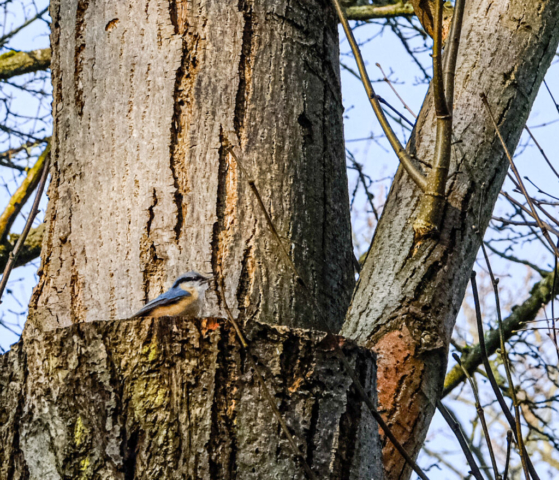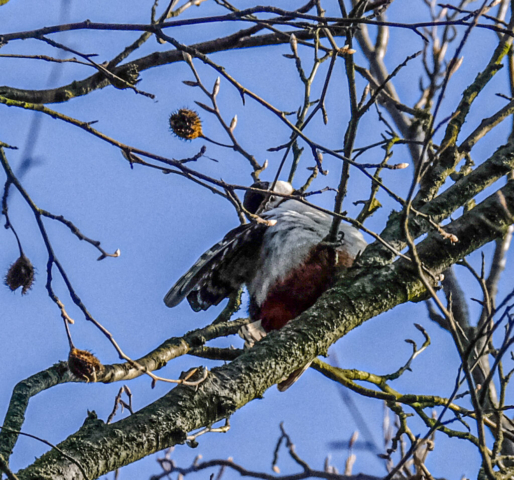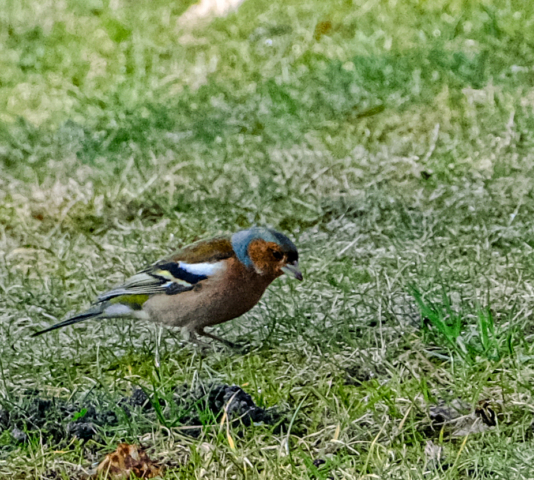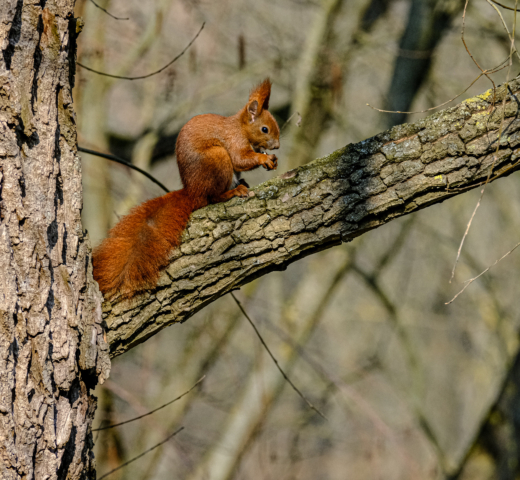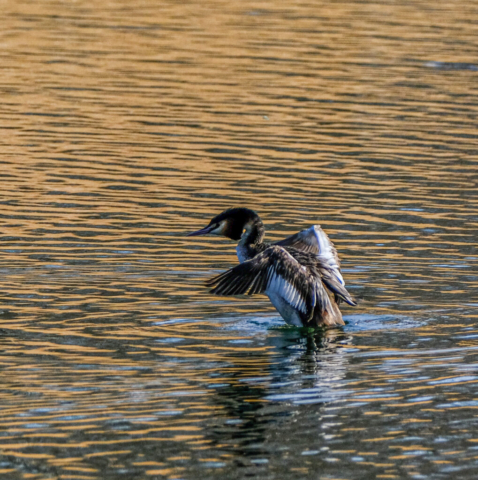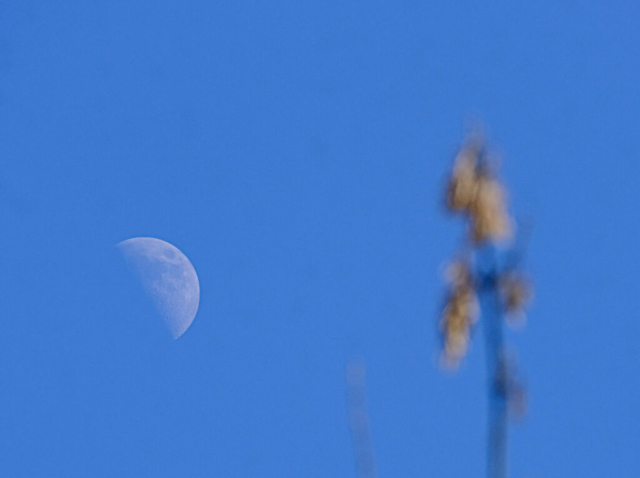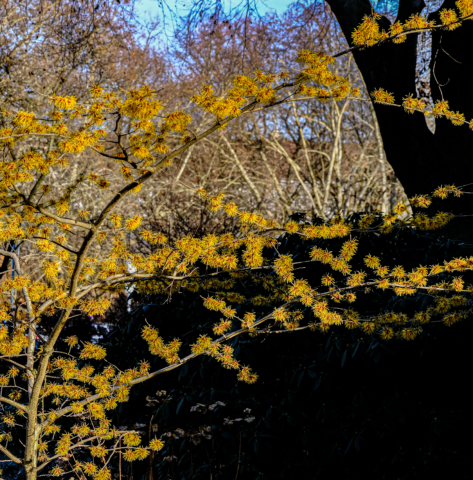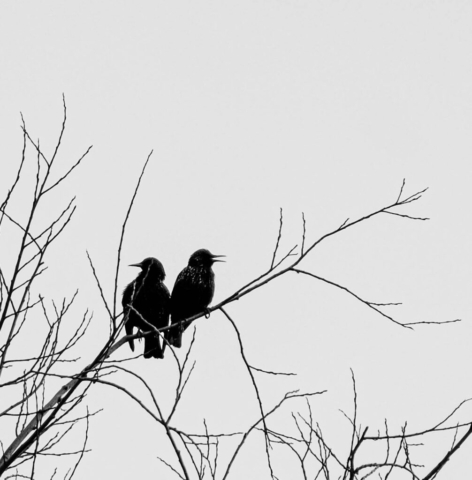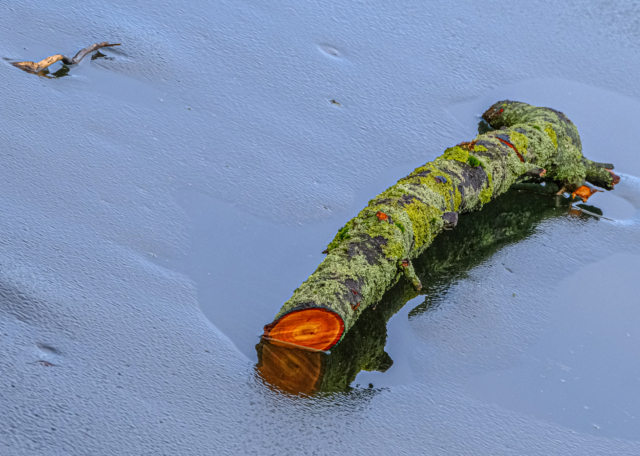Just a star looking a bit lost, a song thrush, and another of those stupid balloons.
Category Archives: Uncategorized
Birdwatching Britzer Garten 16 March
After yesterday’s disappointment when it was raining in Friedrichshagen at the time when the Volkshochschule birdwatching walk at Müggelsee was due to start, it was nice to wake up to gorgeous weather for this Sunday walk, led by always knowledgeable Bernd Steinbrecher of Freilandlabor Britz.
It was a lovely walk with a couple of – for me – new faces, and without the usual gang of incessant yackers.
Tadka Dhal
serves 4
300g (101/2oz) dried toor dhal (yellow lentils/yellow split peas), washed in several changes of water
1 tsp ground turmeric
2 black cardamom pods (optional)
3 tbsp vegetable oil
2 cinnamon sticks
4 green cardamom pods
6 cloves
2 tsp black mustard seeds
1 tsp cumin seeds
2 spring onions, finely sliced
2–3 chillies, any colour, deseeded if you don’t like it fiery, some chopped and the rest left whole
2 fat garlic cloves, finely chopped
1 tbsp peeled and finely chopped fresh root ginger
6 cherry tomatoes, cut in half
good pinch of salt, or to taste
1 tsp sugar, or to taste
juice of 1/2 lemon, or to taste
lots of chopped fresh coriander, to garnish
Gently boil the lentils in a large saucepan of cold water (around 1 litre /13/4 pints will do) and stir in the turmeric and black cardamom pods (if using) – this will add a subtle smoky flavour.
Allow to cook for around 45 minutes, or until the lentils have softened and started to break down. Skim off any foam that sits on the top and give the lentils a stir every now and again in case they begin to stick on the bottom. If they boil dry, add more water.
Once the lentils have softened, turn down the heat and make the tadka. Gently heat the oil in a frying pan and add the cinnamon sticks, green cardamom pods and cloves. When the cardamoms have turned white and the heads of the cloves have swollen, you are ready to stir in the mustard and cumin seeds. When they are sizzling, stir in the spring onions, chillies, garlic and ginger.
After a minute, stir through the tomatoes and turn off the heat. Pour the tadka into the dhal so that it floats on top. This is the traditional way to serve it, with the scented oil sitting on top, but I prefer to stir it through. Season with salt, sugar and lemon juice.
Finally, stir through plenty of chopped fresh coriander and serve with some rice or fresh bread for the ultimate comfort food.
Balti-Baked Squash with Feta, Tomato & Mint
IN PROGRESS
- Yield: Serves 4
- Time: 10 minutes prep, 1 hour cooking
Baked butternut squash rubbed with balti spices and filled with salty feta, sweet sun-dried tomatoes and fresh mint. No wonder this is a great veggie dish that is filling and packs a lot of flavor. There is no recipe as such for “balti,” as it actually refers to the pot that the dish is cooked in rather than a particular spice mix. However, across the world you can find balti spice blends and they typically contain the spices I have used in this recipe, so I have called this dish a balti in terms of the particular spicing of the dish.

- 2 butternut squash, cut in half lengthwise and seeds removed
- 1 tsp cumin seeds
- 1/2 tsp coriander seeds
- 1/2 tsp black peppercorns
- 1/2 tsp crushed red pepper flakes
- 1 tsp garam masala
- 1 tbsp vegetable oil or light olive oil
- 1 cup spinach leaves, roughly chopped
- 1 3/4 oz feta cheese, crumbled
- 2 garlic cloves, finely chopped
- 2 tbsp finely chopped mint leaves
- 6 sun-dried tomatoes in oil, drained and roughly chopped
- grated zest and juice of 1 lemon
Preheat the oven 400°F. Lay the squash, cut-side up, on a rimmed baking sheet.
Roughly crush the cumin and coriander seeds, peppercorns and red pepper flakes with a pestle and mortar before mixing in the garam masala and oil. Rub all over the squash, especially on the flesh side, and bake in the oven for 45 minutes, or until you can put a knife through the flesh of the squash easily.
In the meantime, make the filling by mixing together the spinach, feta, garlic, mint, sun-dried tomatoes and lemon juice.
When the squash is soft, take out of the oven and scoop out nearly all the flesh, leaving a 1/2-inch border of flesh around the inside of each squash half. Mix the scooped-out squash with the filling and pop it all back into the grooves you have just carved out. Sprinkle over the lemon zest and roast in the oven for a further 10 minutes. Serve with a delicious crisp salad, such as Green Bean Salad with Mint, Roasted Fennel & Garlic.
Drunken Chicken
DRUNKEN CHICKEN
INN PROGRESS
1 can (12 oz) beer
1 tbsp peeled, coarsely chopped fresh ginger root
grated zest (peel) of 1 lime, and its juice
1 tsp coriander seeds
1 tsp cumin seeds
3 green onions, coarsely chopped
3 garlic cloves, coarsely chopped
1 fresh red chili, coarsely chopped
3 or 4 fresh rosemary sprigs
1 tsp smoked paprika
1 tsp ground turmeric
2 tbsp vegetable oil (canola preferred)
sea salt or coarse salt
freshly ground pepper
3-1/4 to 3-1/2-lb (1.75 kg) chicken, cut open and flattened
Advertisement 3
Story continues below
Article content
1. Preheat oven to 400°F. Pour beer into a deep roasting pan and add ginger, lime zest and coriander seeds.
2. Grind cumin seed and make seasonings rub for the chicken. Using a food processor or mortar and pestle, combine cumin, onions, garlic, chili and rosemary and pulse in food processor or grind with mortar and pestle. Blend in paprika, turmeric, oil, salt and pepper. Mix into a paste and rub all over the chicken.
3. Lay chicken cut-side down on a rack that will fit over the roasting pan of beer. Bake in preheated oven for 40 minutes (longer if the chicken is larger), until the juices run clear when poked with a fork.
4. Turn oven to broil, or transfer to a grill pan or outdoor grill preheated to medium. Broil or grill until skin is crisp, up to five minutes. Transfer chicken to a platter and let stand for 10 minutes before serving with the lime juice.
serves 4
Daytrip to Halbe 6 March
Thank heavens for gorgeous weather, because getting out into nature and looking for birds to photograph is the only thing that keeps me sane (such as it is ….) these days.
Today I hopped on the RE7 to Halbe to visit the Waldfriedhof and to take a look at the nearby lakes.
I am still cursing myself for not having hauled my camera out of my rucksack before getting off the train, because no sooner was I on terra firma than the most magnificent red kite (Rotmilan) flew by overhead, in perfect lighting. Finding a second chance at photographing a red kite is now my main obsession.
Anyway, the cemetery was overwhelming due to the sheer number of graves, and of course by far the majority of people buried there were terribly young.
Bonus tip: Restaurant Kalimera-am-See.
But first, a photo of a pigeon taken from my home.
Two spontaneous walks 3 and 4 March
On Wilmersdorf Cemetery and along Fennsee
I can highly recommend taking up photography as a hobby. I find that especially nature photography, and more speifically bird photography – or attempts thereat, can help forget.
If you do not have much time to get out into “real” nature, check out your local parks and cemeteries, and you’ll be surprised what you can find, once you start looking. And March is a great month for it – the birds are very active, and there are no leaves on the trees yet.
So, in gorgeous weather, I decided to set out early on my way to VHS in Prinzregentenstraße.
And early the next morning, I swung by my local cemetery on my way to my local LPG supermarket.
By the way, much as I hate pigeons, I have to admit, they can be quite photogenic.
And I was happy to see a treecreeper there for the first time. Tiny, always on the move, in camouflage colours it is difficult to spot, let along photograph.
Birdwatching in Britzer Garten on 2 March – despite …..
The day started misty and cold, but since I have never been so angry in my life, I decided to stick to my original plan of attending the bi-weekly walk with Bernd Steinbrecher of Freilandlabor Britz. Those walks are always enjoyable so it would in any case be healthier to go out and focus on something else – like staying warm, for example – than to follow my gut instinct and stay at home and continue building up to a stroke or a heart attack :-).
A good photo of a green woodpecker – finally – might have saved the day but though I saw several, I STILL did not get a decent photo.
The weekly rant I
I see more and more adults – especially men (??????) – with lollipops sticking out of their mouths. Apparently, it is a “coping mechanism”. I am wondering, again, whether Stephen Fry knew how prophetic he would turn out to be when he coined the phrase “the age of infantilism” about eight years ago. Back then, I think he was referring to silly socks and wearing baseball caps, most often back to front and indoors, incessantly. He probably did not in his wildest imagination foresee grown men with lollipops. But that seems to be a sight we now have to live with. (Our coping mechamism: Impulse control).
Nature protection area Fauler See, and a bit of Obersee
This “Naturschutzgebiet” was a great discovery which I definitely want to return to.
I left home around sunrise, and after spending several hours, which went by in a flash, I returned to Café Strudel for brunch.
In addition to the birds on the photos, and the usual suspets, I saw kleibers, treecreapers and longtailed tits.
Below is a very bad photo of some ducks I do not recall seeing in Berlin before, so perhaps they are just passing through. I am told they are Eurasian Wigeons:






